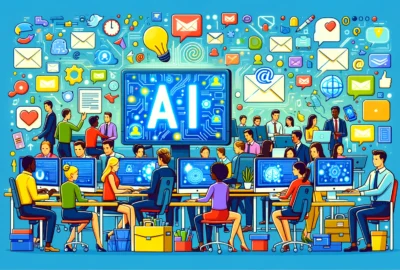iOS App Development Introduction: Getting Started with Building Your Apps
Mobile apps have taken the digital world by storm and today every other business is anxious to have an application to digitize their operations. When we talk about mobile apps, then iOS applications have a significant share of the market.
According to Statista, iOS applications will have already generated over 8 billion downloads through the Apple App Store in 2023. Meanwhile, it has been recorded that there were 1.64 million applications live on the Apple store in the third quarter of 2022.
These stats are enough evidence for the growing significance of iOS applications. Therefore, many businesses are looking to hire iOS app developer to build an application with a seamless experience.
In this blog, we’ll dive into the exploration of iOS app development to have an idea about the core procedures. Any business needs to understand it as it will help you to acquire first-hand knowledge that may benefit your development process.
Understanding the iOS development requirements
The development of an iOS application is a unique process considering its complexity as compared to other applications. iOS apps are built for Apple devices like iPhones and iPad. The application software is usually programmed in Swift or Objective- C language and the deployment is done over Apple App Store.
For the development of an iOS app, you need an Apple Mac computer with the latest version of macOS. Meanwhile, Xcode is the development environment as an editor where you can program the software based on the requirements.
Further, you need an active account for Apple Developer to deploy on the app store. All these requirements are interconnected with each other and you need to fulfill them before developing an iOS application.
Selection of programming language
The selection of the programming language matters a lot in the development of an iOS. It usually depends upon the requirement of the application you are going to build. In iOS development, there are two programming languages:
Objective-C:
Objective-C is a fundamental programming language for iOS app development. There are several tools that you can acquire through this language to create user interfaces for implementing functionalities with proper data management in iOS applications.
iOS developers can integrate Apple’s Cocoa Touch framework of Objective-C to access pre-built components and APIs. This language is usually deployed to build legacy iOS apps with a native performance and seamless responsiveness.
Swift:
Apple has developed its own programming language Swift enhancing the iOS app development process. Swift has more to offer in terms of better safety, efficiency, and readability. Meanwhile, as a language, it is more inclined towards code safety by minimizing programming errors.
The modern syntax of Swift is easy to comprehend and assists the developers to run the program smoothly. Moreover, the continual updates in this language have made it more efficient. Applications built via Swift have a better performance rate by increasing relevance in the overall interaction.
Exploring APIs and libraries
The extensive collection of development resources gives major benefits to the developers. The great thing about iOS app development is its standardization and consistency of the overall functionality.
That is why Apple is capable of releasing its own native APIs and libraries with enhanced usability having prominent features. As these libraries are available as kits, you can access them through iOS SDKs and integrate them with the existing structure of your app.
These kits provide multiple benefits as third-party apps with smooth integration. Whether, you need to create an app for connecting social media, or use the hardware features like a camera or microphone, it’s all become easier with these APIs and library kits.
Storage expansion with clouds
iPhone is a reliable device but it is essential to manage intensive functions by offloading the heavy operations considering huge datasets to the cloud. You can connect your application to a cloud-based service via APIs. So, you can access the cloud storage and database management while ensuring a seamless app experience.
The testing phase of the iOS app
Perfection isn’t something that can be achieved in programming as there is always a chance of improvement. After the development of your iOS application, you must execute the testing process to ensure its optimal functionality and performance. The initial testing phase starts with UI testing to determine the user interaction with your application.
Further, you can run A/B tests and analyze the responses according to the available features. The test can be designed based on different scenarios relevant to the functionality of your application. That’s how you can discover bugs and resolve them accordingly.
iOS app release
The release of an iOS app is a hectic process in itself. After the complete development and completion, the developers submit the app to the App App Store. For this purpose, you can sign in to the app through Xcode directly and be patient with the procedure.
There can be multiple rejections, revisions, and then resubmissions until approval. However, Apple charges $99 annually to register in the Developer Program with a 30% cut on application sales.
The Bottom Line
In the progressive digital market, there is no hiding from the fact that iOS applications have a major impact on the app development market. Many businesses are already in the market to hire app developers los angeles . Meanwhile, the above-mentioned aspect clearly defines the significant procedure of app development that clearly shows the ability of this technology. So, it is high time for businesses around the globe to consider acquiring this technology and excel in the market.









